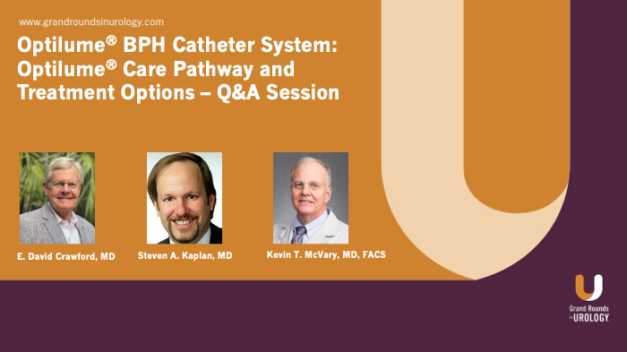Optilume® BPH Catheter System: Surgical Procedure and BPH Patient Management
E. David Crawford, MD, Dean S. Elterman, MD, MSC, FRCSC, and Garrett D. Pohlman, MD, explore the practical functionality of the Optilume® BPH Catheter System, a novel minimally-invasive surgical therapy (MIST). This is the third in a series supported by Laborie.
Dr. Elterman begins with a step-by-step demonstration of the Optilume® BPH Catheter System’s surgical procedure. For each step, he provides his perspective on best practices during the procedure.
Dr. Pohlman then discusses the management of BPH patients and the patient’s perspective on what successful treatment looks like. He addresses pretreatment guidance and counseling for BPH patients who are eligible for the Optilume® BPH Catheter System, i.e., patients looking for a minimally-invasive BPH treatment without the need for medication.
Dr. Crawford concludes by asking Dr. Elterman and Dr. Pohlman for their perspectives on patient and physician reception of the Optilume® BPH Catheter System in their practices. Dr. Pohlman discusses his experiences with reimbursement, significant flow improvement, and options for balloon sizing. Dr. Elterman discusses the durability of patient QoL improvement, limited catheter time, and sexual function preservation.
To see the first part of this series, click here. To see the second part of this series, click here.
Read More




